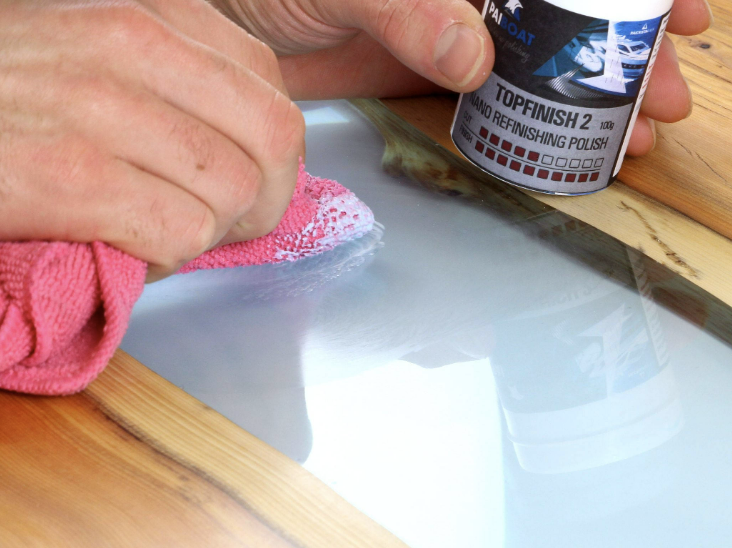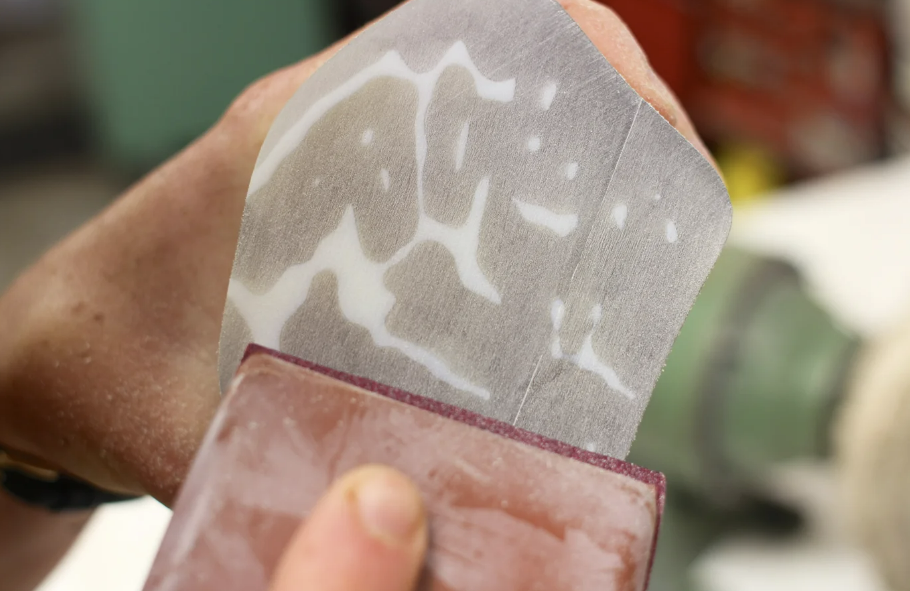Epoxy resin is one of the most versatile substances on the planet, and most artists have used it. Have you ever noticed that your resin artwork usually has a muddy effect instead of a crystal clear surface – like a matte veil covering it? But it’s not insurmountable, and there is a way to give it that beautiful look again: polishing.
Polishing resin is a very simple process that requires only cleaning, sanding, and applying polish to the resin. So whether you’ve finished sanding the surface of your project or are looking for a high gloss, learn how to polish epoxy resin after sanding so you can perfect it for the rest of your resin artwork that follows.

Table of Contents
What is epoxy polishing?
What polishing resin does is something you may not understand. As the name implies, it refines the aesthetics of the resin surface, but what is the point of doing so? Once removed from the mold or applied to the surface of the workpiece, you may not be so happy with the surface of the epoxy resin.
The purpose of polishing the surface of an item is all about getting a clear surface finish. Except for the mold and some external re-factors, the surface of the resin will become blurred after simply polishing. This comes to polishing on the field only when. It can also be used for post-maintenance.
First, we need to understand which epoxy resin objects or applications are suitable for polishing.
We need to understand to make ourselves have a more accurate target:
- Epoxy resin casting
- Resin art
- Resin Jewelry
- Tables made of epoxy resin
- Items made of epoxy resin and wood
- Epoxy resin flooring
- Epoxy resin repair
Preparation work before polishing.
Second, we need to prepare our subsequent tools and supplies.
- sandpaper (recommended from grit 120 to grit 1500 sandpaper)
- soap
- sanding block
- water
- polishing products (tools, similar to electric drills and the like are introduced subsequently)
- wax
- polishing agent
- A set of microfiber cloths
Prepare your surface by polishing.
Whatever the item to prepare your surface is an important part of polishing. Before you want to polish it, make sure it has been polished, as this ensures that the surface is level and that you make sure there is no dust on it. This ensures that your polish adheres properly to the surface of the piece and is not contaminated by any debris on the surface.
When sanding epoxy, you can manually sand it yourself using a sanding block, sandpaper, or an orbital sander. We recommend using an orbital sander when working on larger items, but we do not recommend using a belt sander because it will chew up your workpiece.

Once you have determined the sanding method, you want to use, select a grit anywhere between 120 and 1000 and start sanding.
Epoxy wet sanding
- You can prepare a container with some water or soak the sandpaper.
- Alternatively, you can wet the surface with water and then use sandpaper. (You can start with 400 grit and move up slowly)
- Be careful to go and wipe off the milky water with a cloth during sanding.
- Please note that scratches from the previous sanding cannot be removed
- Finally, remove the water from the surface
Polishing your workpiece
If you want a perfect finish for your resin work, polishing is an indispensable part of you. If you want to finish the work quickly, you can polish it by hand or use other tools.
Polishes and cleaners are indispensable elements when polishing resin.
How to polish resin with Dremel (using Dremel is one of the quickest ways you can polish resin)
First, you need to apply the polish, then use the Dremel to quickly and carefully pass it over the workpiece. Once ready, you can use a microfiber cloth to wipe off any residual compound on the workpiece.
How to polish resin using the manual process
After first applying the compound, use the microfiber cloth to rub the resin into the surface of the workpiece in a circular motion. You can then use the simple polishing jig attached to the drill. After that, it is time to use the microfiber cloth to remove any excess polishing compound from the surface of the workpiece when you feel satisfied. After removal, wipe the workpiece thoroughly with the microfiber cloth again.
